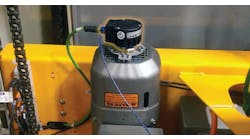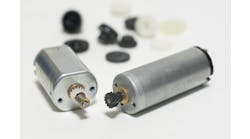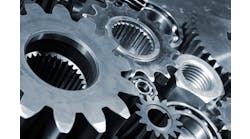Thiago Mohallem was promoted to general manager of Nidec/U.S. Motors’ commercial and industrial motors and drives group, serving many industries, including food and beverage, pumping, agriculture and water/wastewater processing and treatment. Mohallem has more than 20 years of leadership experience at multinationals including Procter & Gamble, L’Oreal and BRF. He joined Nidec in 2017 as chief product officer of Embraco brand motors.
What have been the biggest improvements in motors and/or drives over the past five years?
What’s the most innovative or efficient motor/drive application you’ve ever seen or been involved with?
Thiago Mohallem, general manager, commercial and industrial motors and drives, Nidec: As a motor manufacturer, we look at this from a solution side. Our new motor applications are focused on providing a solution that is highly efficient across the operational envelope of the equipment, not just focused on motor efficiency, but how can we make the whole system more efficient and reliable?
One example is a belt drive fan driven by an induction motor. We have new technology that can change this to a direct drive solution and then replacing the induction motor with a permanent magnet variable-speed synchronous motor that can vary output according to demand. Adding up the losses that go into the belt, the reduced energy usage during lower demand times, along with increased efficiency across the speed range of the fan, you can see 30-40% efficiency increases in a system.
How have motors and drives benefitted from remote monitoring and connectivity?
Thiago Mohallem, general manager, commercial and industrial motors and drives, Nidec: Users have more control of the process and application by utilizing the tools and information the drive is providing, so, by understanding their application, they can tailor the system output and optimize their energy usage.
Can you explain how software development has changed motor/drive design and production?
Thiago Mohallem, general manager, commercial and industrial motors and drives, Nidec: Modeling tools, such as Ansys, have allowed the development process to accelerate. Our teams have used dynamic models and feedback loops to assist in the design and development process. The iterative process with typical prototype development would have taken too much time and resources to efficiently develop the new technology we’re seeing. Utilizing software tools allows us to have working prototypes after only a couple of design iterations.
There are many design tools that allow engineers to optimize designs as a digital offering before a physical part is ever created. Electronics, computational fluid dynamics (CFD), motor electrical design and 3D computer-aided design (CAD) are examples.
How do motors and drives figure into any digital-twin platform being used by manufacturers?
Thiago Mohallem, general manager, commercial and industrial motors and drives, Nidec: Digital-twin simulations are critical in the development of new drive and motor technologies and greatly help reduce the development cost while accelerating the development time.
Equipment manufacturers are using digital twins to simulate entire installations and applications in a similar way to how we’re using these tools for motor and drive development.
When will motors and drives become IT-friendly enough that engineers and safety professionals are no longer required for installation and operation?
Thiago Mohallem, general manager, commercial and industrial motors and drives, Nidec: Motors and drives are converting significant amounts of electrical power into mechanical power. Development will make integration of ECMs easier, but there will always be inherent electrical and mechanical risks in these types of installations. Professionals with experience in optimizing the application safely, as well as following installation codes and safety procedures, will always be necessary.
What future innovations will impact motors and drives in discrete-manufacturing operations?
Thiago Mohallem, general manager, commercial and industrial motors and drives, Nidec: Innovation in drives will continue to improve packaging size and processing capability allowing simpler integration into the overall system.
Tell us about your company’s state-of-the-art motor and/or drive offerings.
Thiago Mohallem, general manager, commercial and industrial motors and drives, Nidec: At Nidec, we’re always pushing the envelope and focused on combining the benefits of newer motor technologies with the reliability of trusted products.
A big focus at Nidec is providing integrated motor and drive technology that offers the highest efficiencies. We’ve introduced several products in the past few years with power drive systems that provide high-efficiency solutions across a large operating range to drive many different systems.
Our newest innovation is the SynRA synchronous motor, which offers the efficiency of permanent magnets but without the need for costly rare earth magnets. SynRA can be paired with a standard drive rather than a special or custom drive and can be dropped into an existing system to yield higher efficiency across the speed range of the equipment. When integrated with our ID300 PerfectSpeed control, it’s really a game-changing technology, and we’ve seen a great deal of interest from customers across different industries.
The Agri-Fusion combined variable speed motor and drive is specifically designed to regulate large ventilation fans with high-torque requirements critical to optimal air circulation.






